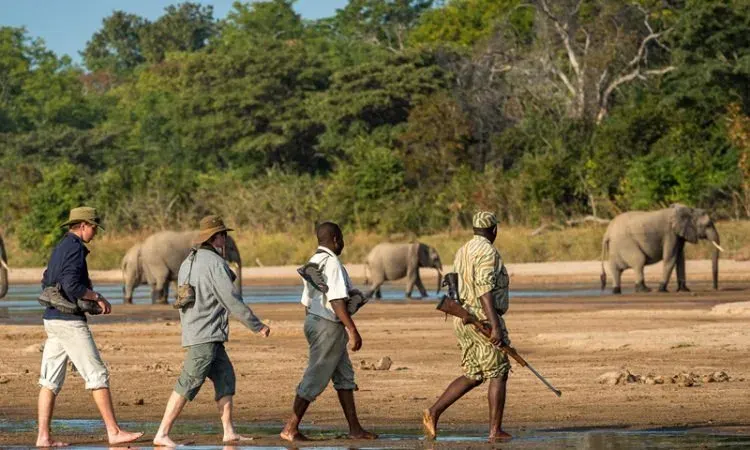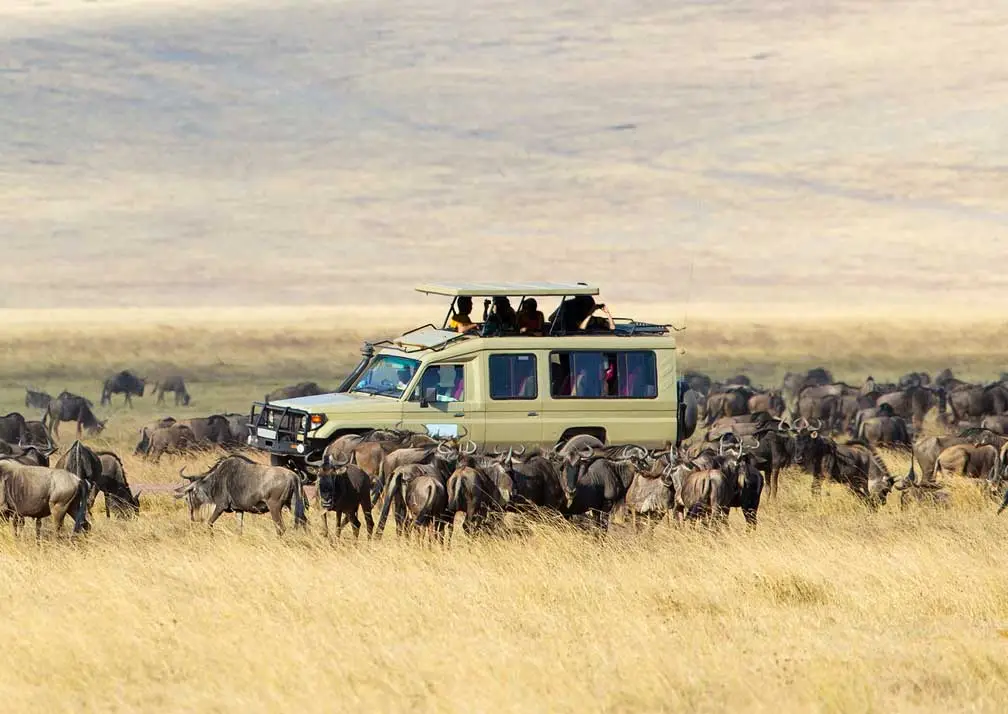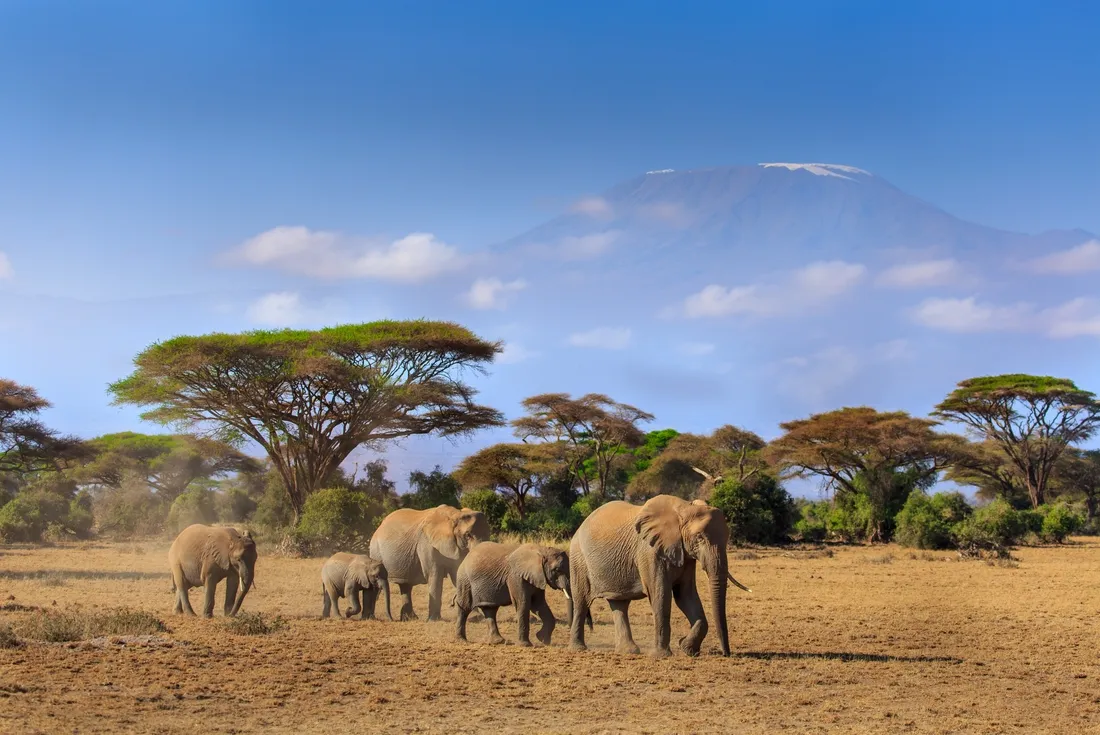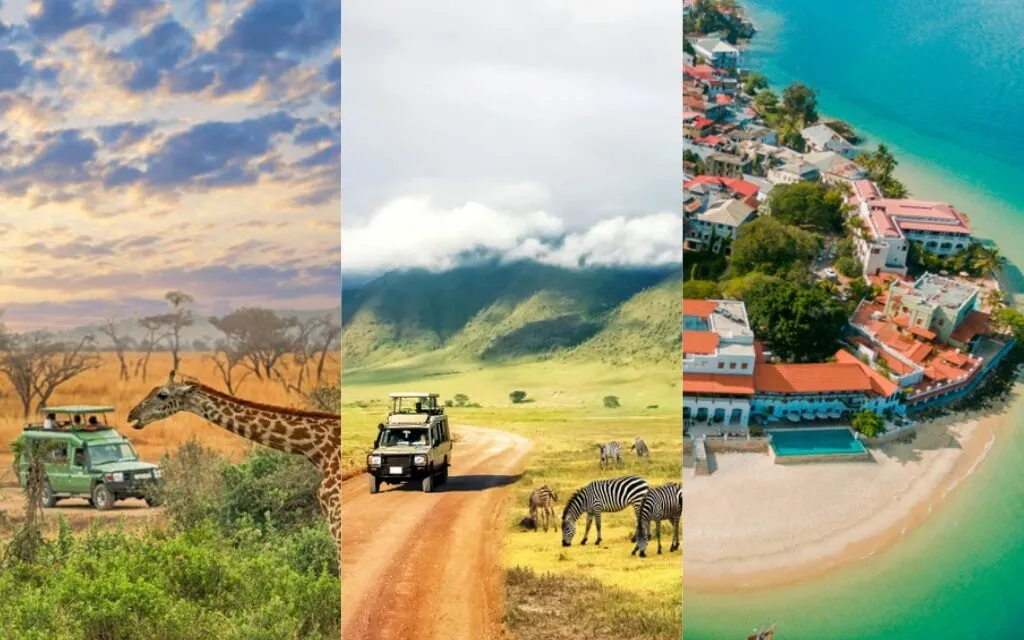Walking Safaris in Tanzania: What You Need to Know
Walking safaris in Tanzania offer a rare chance to experience the wilderness up close, guided by expert rangers who ensure both safety and insight into the ecosystem. Expect to encounter wildlife tracks, learn about plants and insects, and observe animals from a respectful distance. Wear comfortable walking shoes, neutral-colored clothing, and carry essentials like water, sunscreen, and a hat. Always follow your guide’s instructions to stay safe while enjoying the adventure. Below is a practical overview of what you need to know before setting out on a walking safari with Capable Africa Tours.
Start Planning Your Adventure
Your Ultimate Guide to Walking Safaris in Tanzania
Walking safaris in Tanzania offer a unique way to connect with nature, allowing you to experience the sights, sounds, and smells of the wilderness up close. Unlike vehicle-based safaris, walking tours let you explore at a slower pace, noticing details like animal tracks, bird calls, and native plants. With Capable Africa Tours, you’ll be guided by expert rangers and trackers who ensure safety and share deep knowledge of Tanzania’s ecosystems. This guide covers everything you need to know, from top destinations and costs to safety tips and packing essentials.
Why Choose a Walking Safari in Tanzania?
Walking safaris provide an unparalleled sense of adventure and intimacy with nature. You’ll feel the pulse of the African bush, hear the rustle of leaves, and spot wildlife in their natural habitat without the barrier of a vehicle. Tanzania’s diverse landscapes—from Serengeti’s grasslands to Selous’ riverine forests—make it a top destination for walking safaris. With Capable Africa Tours, you’ll enjoy eco-friendly tours that support conservation and local communities.
Best National Parks for Walking Safaris in Tanzania
Tanzania boasts several parks and reserves ideal for walking safaris, each offering unique landscapes and wildlife. Here are the top destinations recommended by Capable Africa Tours:
- Serengeti National Park: Famous for the Great Migration, short guided walks focus on smaller wildlife, tracks, and flora. Best for half-day walks due to predator density.
- Ruaha National Park: Known for its rugged terrain and large elephant and lion populations, Ruaha offers multi-day walking safaris with rustic fly-camping.
- Selous Game Reserve (Nyerere National Park): Vast and less crowded, ideal for riverine walks with sightings of hippos, crocodiles, and diverse birdlife.
- Katavi National Park: Remote and wild, perfect for immersive, multi-day walking safaris with sightings of buffalo, antelope, and predators.
- Arusha National Park: Close to Arusha, offers scenic walks with views of Mount Meru, flamingos, and colobus monkeys, ideal for day trips.
According to Tanzania National Parks, walking safaris account for approximately 10% of safari activities, with Ruaha and Selous hosting over 60% of these due to their vast, less-crowded landscapes.
Costs of Walking Safaris in Tanzania
Walking safaris are slightly more expensive than vehicle-based safaris due to the need for armed rangers and specialized guides. Costs vary based on the park, duration, and accommodation. Here’s a breakdown from Capable Africa Tours:
- Budget Walking Safari: $250–$400 per person per day. Includes basic camping, shared walks, and meals.
- Mid-Range Walking Safari: $400–$600 per person per day. Offers comfortable tented camps and private guides.
- Luxury Walking Safari: $600–$800+ per person per day. Features upscale fly-camping, gourmet meals, and exclusive routes.
Additional Costs:
- Park Fees: $30–$100 per person per day, higher in Selous and Katavi.
- Guide and Ranger Fees: $50–$100 per group per day.
- Domestic Flights: $150–$400 to remote parks like Katavi or Selous.
- Tips: $15–$30 per group per day for guides and rangers.
Many travelers find the higher cost worthwhile for the intimate experience, with 85% of Capable Africa Tours’ clients rating walking safaris as “unforgettable” compared to 70% for vehicle safaris.
Safety Tips for Walking Safaris in Tanzania
Walking safaris are safe when conducted with experienced guides and proper precautions. Capable Africa Tours prioritizes your safety with these guidelines:
- Follow Your Guide: Stay close to your guide and armed ranger, and follow their instructions at all times.
- Maintain Distance: Keep a safe distance from wildlife (minimum 50 meters for large animals like elephants).
- Stay Quiet: Avoid loud noises to prevent startling animals and enhance your experience.
- Wear Neutral Colors: Avoid bright colors or patterns; stick to khaki, beige, or green to blend in.
- Health Precautions: Use insect repellent, stay hydrated, and inform your guide of any medical conditions.
Tanzania’s park authorities report zero serious incidents on guided walking safaris over the past five years, thanks to strict safety protocols.
What to Pack for a Walking Safari
Packing smart ensures comfort and safety on a walking safari. Capable Africa Tours recommends:
- Clothing: Lightweight, long-sleeved shirts and pants in neutral colors (khaki, beige, olive). Avoid blue/black to deter tsetse flies.
- Footwear: Sturdy, broken-in hiking boots with good grip for uneven terrain.
- Accessories: Wide-brimmed hat, sunglasses, and a lightweight scarf for dust protection.
- Gear: Binoculars (8x42 recommended), a small backpack, and a reusable water bottle.
- Health Essentials: Sunscreen (SPF 50+), insect repellent (DEET 30–50%), and a basic first-aid kit.
- Photography: Camera with a zoom lens (200–300mm) and extra batteries.
Tip: Capable Africa Tours provides a detailed packing checklist upon booking to ensure you’re fully prepared.
What to Expect on a Tanzania Walking Safari
A walking safari is a thrilling, sensory experience. Expect to walk 2–6 hours per day, depending on the itinerary, with breaks for rest and observation. You’ll spot smaller wildlife like antelopes, zebras, and birds, and learn about tracks, plants, and ecosystems from your guide. Encounters with predators like lions are rare but possible, always at a safe distance with an armed ranger. The pace is leisurely, allowing time to absorb the sights and sounds of the bush. At night, you’ll stay in tented camps or lodges, hearing the calls of nocturnal animals.
Travelers describe walking safaris as “life-changing,” with 90% of Capable Africa Tours’ clients noting the thrill of being on foot in the wild.
Best Time for Walking Safaris in Tanzania
The dry season (June–October) is ideal for walking safaris due to sparse vegetation, easier wildlife spotting, and cooler temperatures for walking. The green season (November–March) offers lush scenery and excellent birdwatching, but some trails may be muddy. April and May are less ideal due to heavy rains. Capable Africa Tours customizes itineraries to match seasonal conditions.
Over 70% of walking safaris occur during the dry season, with June–August being the peak months, according to Tanzania National Parks data.
Fitness and Age Requirements
Walking safaris require moderate fitness, as you’ll walk 5–15 km daily on uneven terrain. Most parks set a minimum age of 12 or 16, depending on the route’s difficulty. Capable Africa Tours offers shorter, family-friendly walks in parks like Arusha for those with younger children or lower fitness levels.
Tip: Inform your tour operator about your fitness level for a tailored experience.
Combining Walking Safaris with Other Experiences
Enhance your walking safari with other adventures. Capable Africa Tours can combine your trip with:
- Vehicle Safaris: Mix walking with game drives for a comprehensive wildlife experience.
- Zanzibar Beach Holiday: Relax on pristine beaches after your safari, with seamless transfers arranged.
- Kilimanjaro Climb: Pair your walk with a trek up Africa’s highest peak.
- Cultural Tours: Visit Maasai or Hadzabe communities for a cultural immersion.
Book Your Walking Safari with Capable Africa Tours
Ready to walk Tanzania’s wild trails? Capable Africa Tours offers customized walking safaris with expert guides, sustainable practices, and itineraries tailored to your interests and budget. Experience the thrill of the African bush up close!
- Expert Guides with 10+ Years of Experience
- Customizable Walking Safari Itineraries
- Eco-Friendly Tours Supporting Conservation
- Seamless Combinations with Zanzibar or Kilimanjaro
- 98% Client Satisfaction Rate



